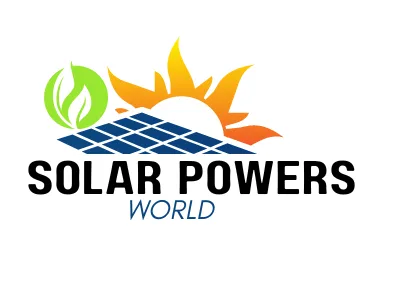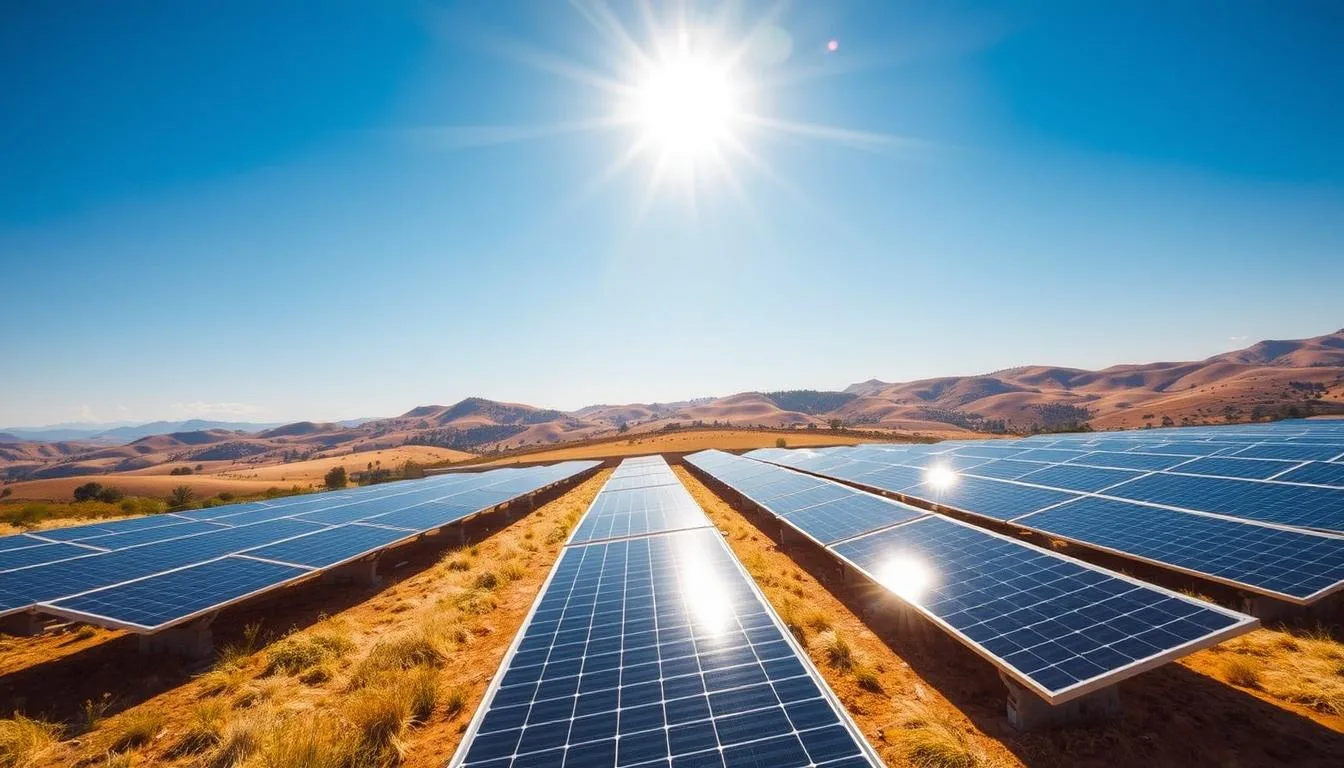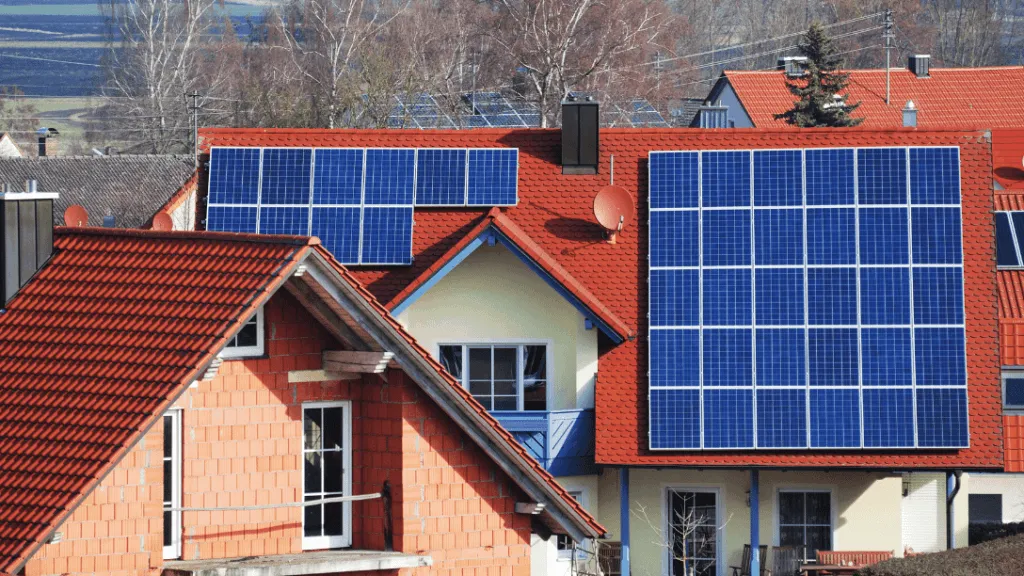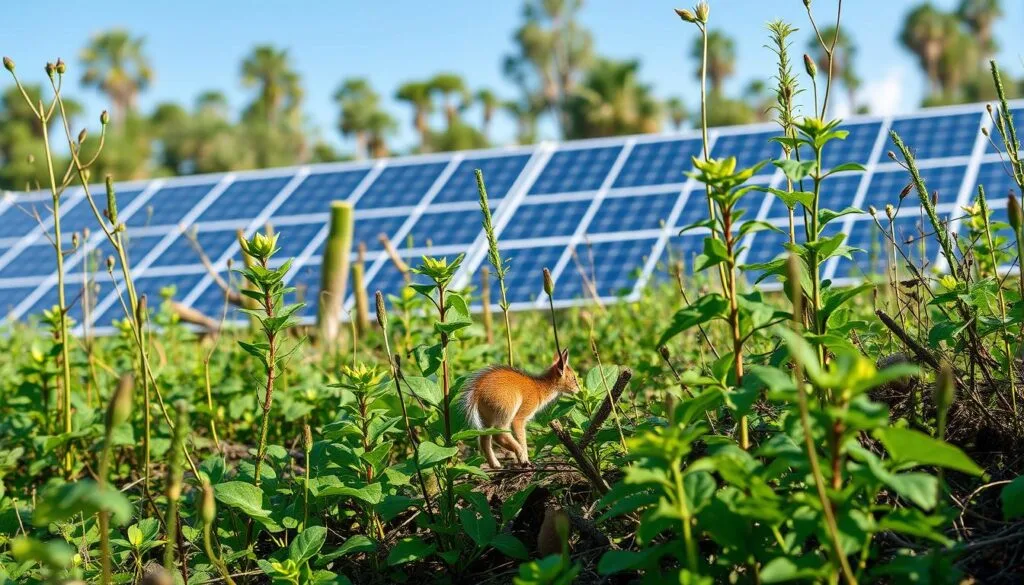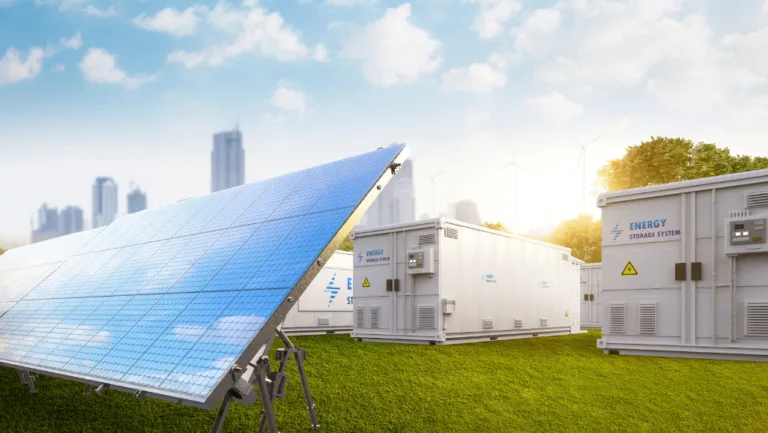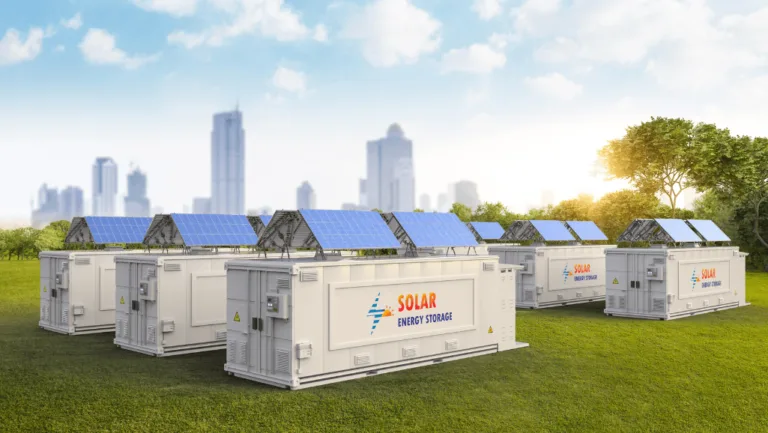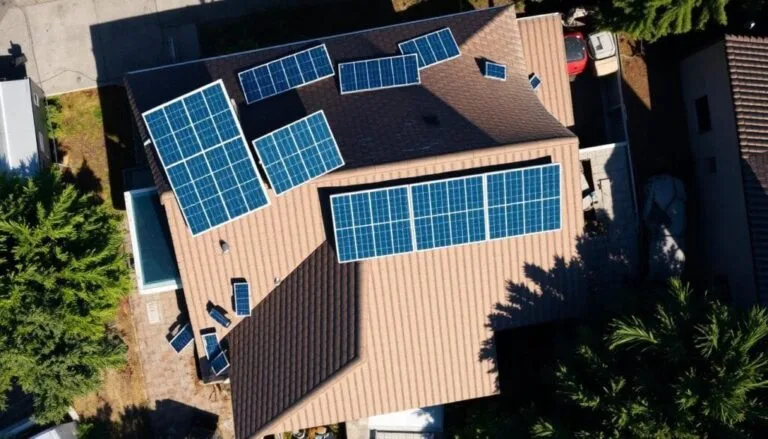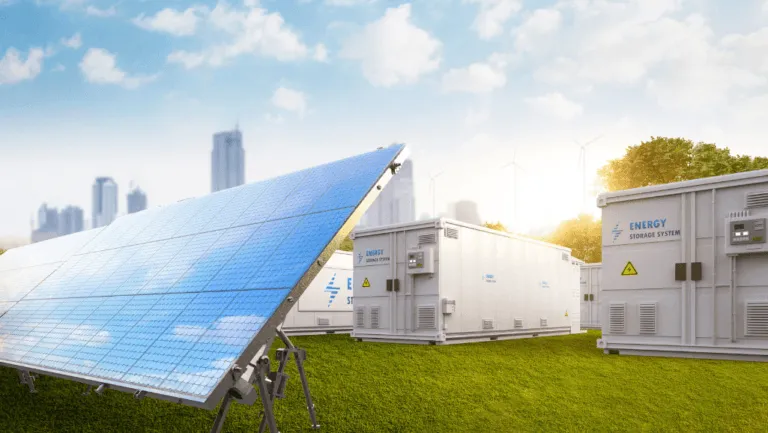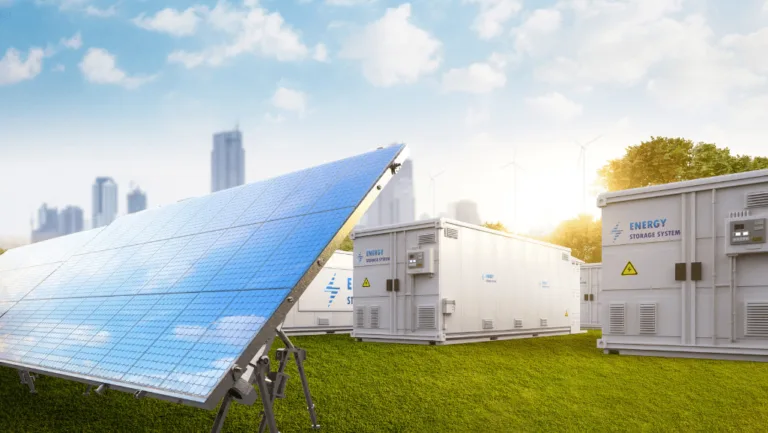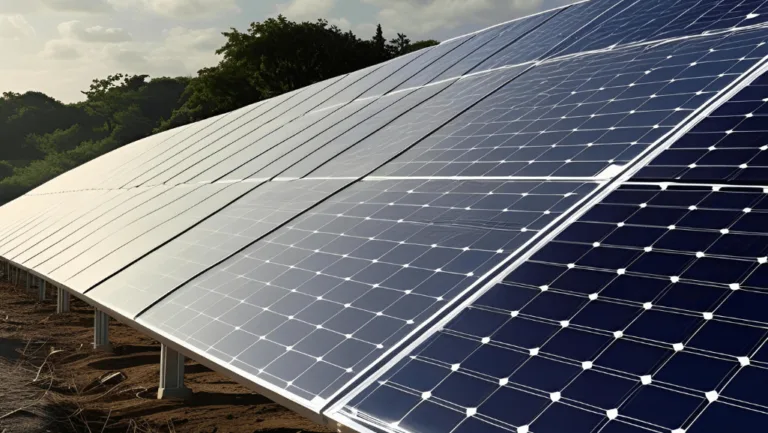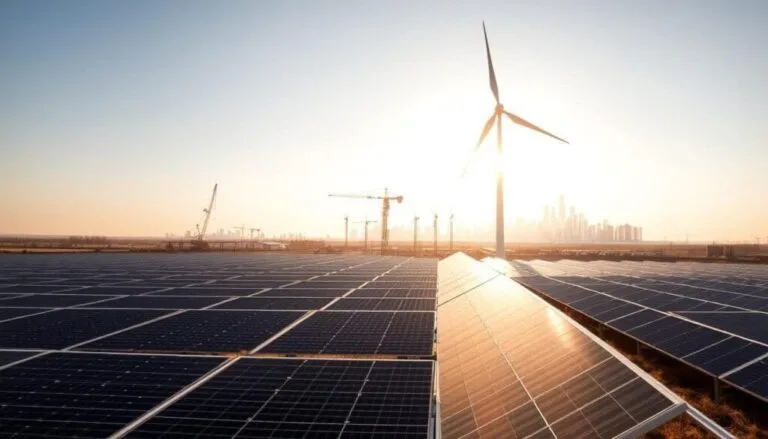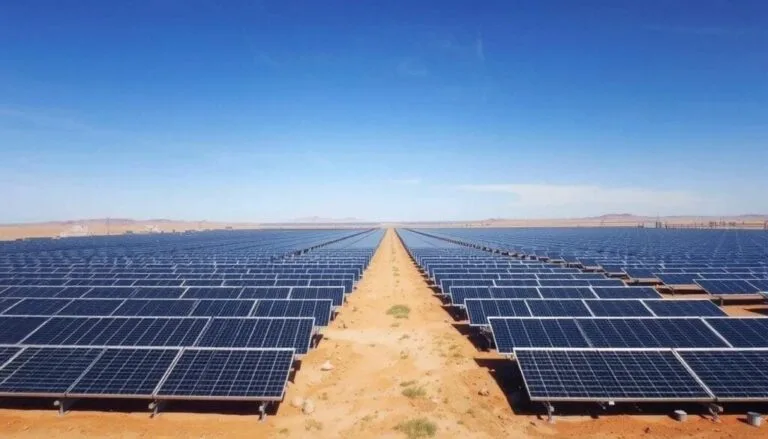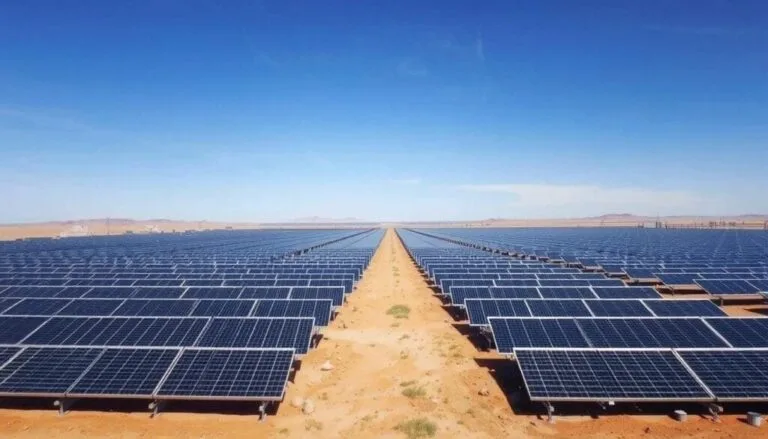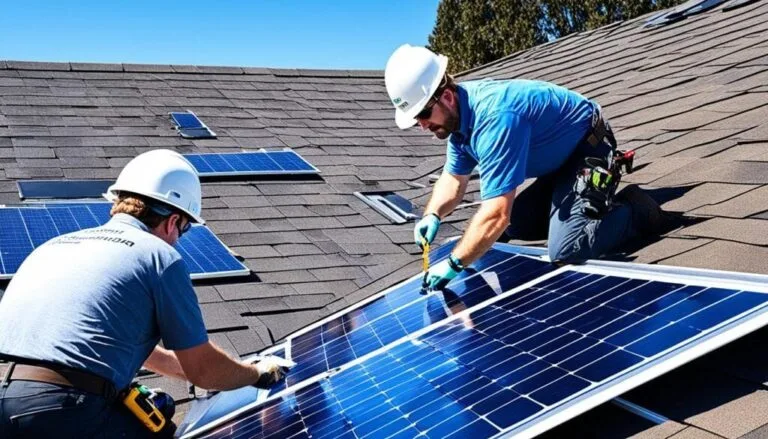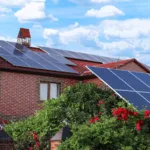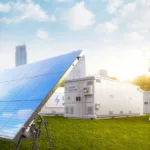The world is moving fast towards renewable energy solutions due to climate change. Solar energy is seen as a key player in this shift. It uses sunlight, a limitless resource, to make electricity without polluting the air or releasing harmful gases. However, the full picture of environmental impact of solar energy shows both bright spots and areas needing careful thought.
Looking at solar energy sustainability shows a detailed view. Solar panels last more than 30 years and start paying back energy in 1 to 4 years. Yet, we must look at the use of materials, how they’re made, and what happens to them at the end. Recycling PV cells is becoming more important, thanks to new laws and innovations in sustainable energy technology.
We can’t just praise the growth of solar without looking at its environmental side. This includes mining metals and glass, handling dangerous chemicals, and what to do with panels when they’re no longer used. We need to focus on getting materials sustainably and making production better to protect our planet.
There are big steps being taken in laws and research to help solar energy. Things like the solar investment tax credit help more people use it. Groups like the Solar Energy Technologies Office (SETO) and the National Renewable Energy Laboratory (NREL) are studying how solar energy affects the environment.
Key Takeaways
- Solar energy doesn’t pollute while it’s working, making it a good choice for the planet.
- Even though solar has big benefits, making the panels and using materials can be tough on the environment.
- What we do with solar panels when they’re old is crucial for their environmental impact.
- New laws and help from the government are pushing solar energy to be more sustainable and popular.
- Working together, researchers are finding ways to grow solar energy without harming the environment.
The Fundamentals of Solar Energy as a Sustainable Source
Solar energy is a key player in sustainable energy. It uses the sun’s power, turning it into electricity through solar panels or photovoltaic systems. This method boosts solar panel efficiency and helps the world move towards cleaner energy.
Understanding How Solar Panels Convert Sunlight into Electricity
Solar panels work by using the photovoltaic effect. This effect was found in 1839 and changes sunlight into electric current. The panels, made of materials like silicon, catch sunlight. This action releases electrons and creates electric current.
The Role of Photovoltaic (PV) Systems in Sustainable Energy
Photovoltaic systems are crucial for sustainable energy. They help reduce our need for fossil fuels. By cutting down on harmful emissions and using sunlight, they help us move towards sustainable energy.
New technologies like Bifacial and Concentrated PV Cell panels make these systems better. They work well in different places and conditions. Solar farms, with many panels together, show how solar power can meet our energy needs in a green way.
Solar technology is changing how we get electricity. It offers a clean and affordable energy option. As solar panels get better, a greener future looks more possible.
Environmental Benefits of Solar Power
Using solar power is key to making green energy initiatives better and using the benefits of solar power. This clean energy source helps protect the environment and boosts the use of clean energy technology in many areas.
Solar power greatly cuts down on greenhouse gas emissions. It replaces old fossil fuel power, helping to fight climate change. For example, using solar power in an average U.S. home saves a lot of trees and reduces coal production.
Solar panels are also very good for the environment because they don’t use much water. This is unlike traditional power sources that use a lot of water, making solar energy a better choice for saving water and resources.
- Solar power cuts down on carbon emissions from old power sources like carbon dioxide and methane. These gases are bad for the environment.
- Using less fossil fuels, solar energy helps create a stable and possibly cheaper energy future. It’s simple and there’s a lot of it.
- Technology has made solar panels better; now we need less material to make them. This shows how clean energy technology is getting better.
Using solar systems together is changing how we live sustainably. In 2020, solar panels got 33% better, with some companies like SunPower reaching 22.8% efficiency at home. These improvements make solar power more appealing and push for more green energy.
In conclusion, going solar is crucial for the planet and smart for the future. It’s a big step towards a sustainable and strong energy system.
Energy Payback from Solar Systems
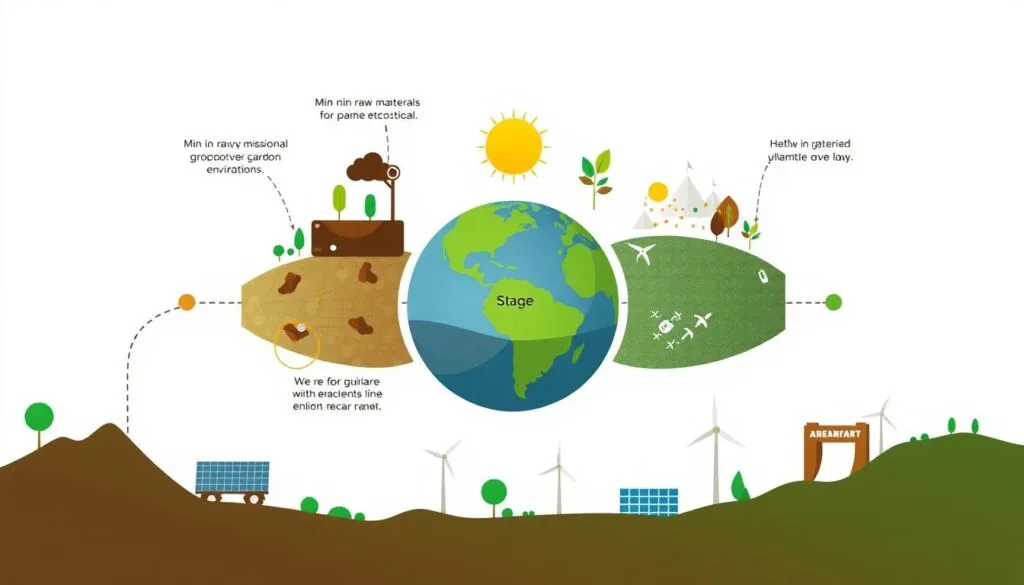
The idea of energy payback is key to understanding how solar PV systems help the environment. It shows how long a system needs to run to make the energy it took to make it. Thanks to new tech, solar panels are getting better, making them more eco-friendly.
With better technology, solar panels now last longer and use less energy to make them. This means they’re good for the planet. The solar panel lifecycle is getting better, making solar energy a top choice for clean energy.
Assessing the Lifecycle of Solar Panels and Energy Production
Now, solar panels made of multicrystalline silicon take about 4 years to pay back their energy costs. Thin-film panels take around 3 years. But, new tech is making them even better.
Soon, these panels might pay back in just 2 years for multicrystalline and 1 year for thin-film. This is a big step towards using less energy and being kinder to the earth.
The Lifespan of PV Systems and Operational Sustainability
Solar PV systems not only pay back faster, but they’re also good for the planet when they’re working. They produce 87% to 97% clean energy, without harming the environment. Over 30 years, they help us meet our green goals.
| System Type | Current Energy Payback (Years) | Anticipated Energy Payback (Years) | Emissions Avoided (Tons CO2) |
|---|---|---|---|
| Multicrystalline-Silicon | 4 | 2 | 100 |
| Thin-Film | 3 | 1 | 100 |
This table shows how solar panels are getting better with new tech. They’re paying back faster and cutting down on emissions. This makes solar energy a great choice for our planet.
Is solar energy sustainable: Analyzing the Materials and Production
The rise in solar energy production has made us wonder if it’s sustainable. Looking into how solar panels are made is key to understanding their impact on the environment. It’s important to see how this green energy affects our planet.
Environmental Costs of Material Extraction and Manufacturing
Getting the materials for solar panels affects the environment. Making PV cells uses quartz and metals that need a lot of energy. This has led to more mining, which harms local ecosystems.
Handling Hazardous Chemicals Used in PV Cell Manufacturing
For efficient solar energy, using dangerous chemicals is a must. Chemicals like cadmium and lead in some solar cells are bad for the environment and health. We need strict rules and safety steps to handle these chemicals safely.
Solar Panels End-of-Life: Recycling and Waste Management
As more solar panels are made, managing them when they’re no longer used is crucial. Recycling solar panels helps save valuable materials and lessen harm to the environment. With millions of tons of solar panel waste expected by 2050, recycling is essential. It helps reduce waste and supports solar energy’s sustainability by reusing materials.
Knowing how solar technologies move from raw materials to recycling is vital for their long-term sustainability. Each step offers chances to lessen environmental harm. As solar grows, new innovations and rules will help keep it good for the planet.
Impacts of Solar Energy on Wildlife and Ecosystems
The growth of solar energy is a big step towards using land wisely and cutting down on carbon emissions. However, it also brings challenges for wildlife and ecosystems. It’s important to understand these impacts to balance our energy needs with protecting nature.
Habitat loss and fragmentation are big concerns due to large solar farms. These farms can take up a lot of land, pushing out native plants and animals. This can lead to the loss of species or disrupt their ways of life, like desert tortoises and birds.
- The building of solar farms can cause soil erosion and land degradation, making it hard for wildlife to find food and water.
- These farms can also create noise and light pollution, which can change how wildlife behaves and attract predators, affecting the food chain.
Choosing the right place for solar farms is key. Putting them on already disturbed lands helps avoid harming untouched ecosystems. Using technology like bird diverters and non-reflective panels can also reduce harm to wildlife. Designing panels to be safe for wildlife helps too, by providing shelter and paths under the panels.
Adaptive management strategies and regular checks are important to lessen the impact of solar farms on wildlife. These strategies involve making changes based on new data and doing thorough environmental studies before starting a project.
Not all effects of solar energy are bad. It can cut down on greenhouse gases, help restore habitats, and provide shade. Plus, putting panels on rooftops or in degraded areas is less harmful to wildlife. With the right approach, solar energy can fit well into our natural world.
Working to reduce and adapt is crucial for solar energy and wildlife to live together. Using insights from studies on solar and wildlife can help us make better choices. This way, we can meet our energy goals and protect nature at the same time.
Water Usage in Solar Energy Production
Solar energy is becoming a key source of sustainable power. It’s vital to understand how solar energy uses water to protect our ecosystems. Solar plants use solar collectors and certain practices that affect water and nature.
The Need for Water in Cleaning Solar Collectors
Cleaning solar collectors is crucial but often ignored. It takes about 20 gallons of water per megawatt hour to clean them. This might seem small, but it adds up on a large scale. Companies like Trina Solar have cut their water use by 46% from 2020 to 2021. This shows a move towards being more eco-friendly.
Impact of Water Usage by Solar Power Plants on Local Ecosystems
Many think solar energy doesn’t use water, but it does, especially in solar thermal plants. These plants use 500 to 800 gallons of water per megawatt hour. This is similar to traditional power plants. So, we must consider water use when looking at solar energy’s effects on the environment.
Let’s compare water usage across different energy sources and solar setups:
| Energy Source | Water Usage per MWh | Comparison |
|---|---|---|
| Solar PV (washing) | 2 gallons | Minimal vs. fossil fuels |
| Coal-fired | 1,100 gallons | Extremely high water use |
| Nuclear | 800 gallons | High water use |
| Hydroelectric | 440,000 gallons | Very high with significant evaporation loss |
| Wind Energy | Most water-efficient |
These facts show why using dry cooling and floating solar setups is key. They use less water and cut down on evaporation. These innovations help with power efficiency and protecting nature.
Minimizing Land Use and Promoting Biodiversity
Developing solar energy projects must consider biodiversity in solar farming. Choosing the right sites and managing land helps support agriculture and protect native landscapes. This approach is key to environmental sustainability and keeping ecosystems balanced.
Site Selection Best Practices for Solar Installations
Finding the perfect spot for solar farms is vital. Using lands that aren’t great for farming helps avoid harming productive land. It turns unused areas into solar energy sources. This way, we use solar energy without harming prime farmland.
It’s also important to follow rules to protect endangered species and their homes. This keeps biodiversity safe.
Coexistence of Solar Farms with Agriculture and Native Landscapes
Combining solar farms with farming has big benefits. It keeps native landscapes safe for wildlife and helps make energy. By planting plants that help bees and keeping natural features like hedgerows, solar farms can boost local ecosystems.
This approach is key in places like California’s Great Central Valley. There, farming and solar energy can work together without harming the environment.
New ways to manage land around solar farms are being tried to protect wildlife. These include adding features that help animals avoid solar panels. This keeps local animals safe and biodiversity high near solar farms.
In summary, picking the right sites and integrating solar energy with farming helps. It lets both thrive while keeping solar farming areas rich in biodiversity. This careful planning supports local ecosystems and makes solar power more sustainable.
Advancements in Solar Technology and Efficiency
The solar energy field is changing fast, especially in PV efficiency and advancements in solar technology. New innovations are making solar systems better and more flexible. These changes are key to expanding the use of sustainable energy.
Innovations in PV Efficiency and Performance
Photovoltaic technology has made huge strides in recent years. Solar cells used to be about 25% efficient, but now they’re close to 50% in labs. This big jump is thanks to new materials like perovskite and advanced silicon cells.
Now, we have bifacial solar panels that catch sunlight from both sides. Solar trackers also boost energy capture by up to 25%. These are just a few examples of how solar tech is getting better.
Better solar batteries mean we can use solar power even at night or on cloudy days. These batteries are also getting cheaper, making solar energy more affordable for everyone. For more info, check out green energy trends online.
Trends in Clean Energy Technology and Green Energy Initiatives
Solar technology is becoming part of our everyday lives, helping us move towards a greener future. Solar windows and solar tiles could soon be common in buildings. This will make green energy trends a big part of city life.
Artificial intelligence and machine learning are also changing solar energy. They help solar panels work better, making more energy. Floating solar panels are another new trend. They work well because water cools them down, boosting energy production by 10%.
Thin-film solar cells are another big step forward. They’re cheaper, lighter, and work better than old solar panels. These changes show how fast solar technology is evolving.
The progress in advancements in solar technology is changing how we think about solar power. It’s leading us towards a future with cleaner energy. The mix of technology and green strategies is creating stronger, more sustainable energy solutions.
Regulatory Framework and Environmental Policies
Understanding the regulatory framework and environmental policies is key for managing solar energy systems well. This section looks closely at U.S. rules, showing how they push for responsible use and solar energy disposal.
U.S. Environmental Laws Governing Solar Energy Use and Disposal
The U.S. has strong laws to help solar energy systems be deployed and disposed of safely. The Public Utilities Regulatory Act (PURPA) of 1978 makes utilities buy power from solar facilities. This boosts renewable energy growth. The Federal Investment Tax Credit (ITC) gives a 30% tax break on solar setup costs, encouraging more solar tech use.
Efforts from SETO and NREL in Managing Solar Energy’s Environmental Impact
The Solar Energy Technologies Office (SETO) and the National Renewable Energy Laboratory (NREL) lead in lowering solar tech’s environmental harm. They work on making solar energy cheaper, more reliable, and sustainable. SETO aims to make solar energy as cheap as other energy sources by 2030 through research and development.
They also work on making solar energy disposal easier. Policies like net metering and solar renewable energy credits (SRECs) offer economic benefits for solar power. These policies help solar power fit into the environment without harming it.
| Policy | Description | Impact |
|---|---|---|
| ITC | 30% tax deduction for solar installations from 2022 to 2032 | Encourages investment in solar technology |
| MARCS | Five-year accelerated depreciation for solar equipment | Reduces taxable income, promoting commercial solar investment |
| PURPA | Utilities must purchase power from qualifying solar facilities | Stimulates the growth of solar power |
| SETO’s R&D | Enhance solar technology affordability and reliability | Aims for cost-competitive solar energy by 2030 |
The mix of environmental policies, regulatory framework, and green growth shapes solar energy. It shows how policy and innovation must work together to meet environmental and economic goals.
Conclusion
Looking into solar energy’s sustainability shows us big wins in panel efficiency and cost cuts. These changes help the planet and the economy. The solar industry creates lots of jobs in the U.S., employing over 263,000 people across about 10,000 companies per state.
Solar panels last 25 to 30 years, showing solar energy’s long-term commitment to the planet. This makes solar energy a key player in creating a renewable future.
Solar energy can cut down greenhouse gas emissions in the electricity sector by almost 29%, says the US Environmental Protection Agency. It uses little water, makes no noise, and improves air quality, making it a top choice for clean energy.
It also helps remote communities get clean, affordable power. This shows solar energy’s big role in making things better for everyone. It’s not just good for the planet but also for people and communities.
The many benefits of solar energy show it’s key to a cleaner, sustainable future. It helps the environment, grows jobs, and makes properties more valuable. Solar energy is vital for a future where the economy and nature work together well.

